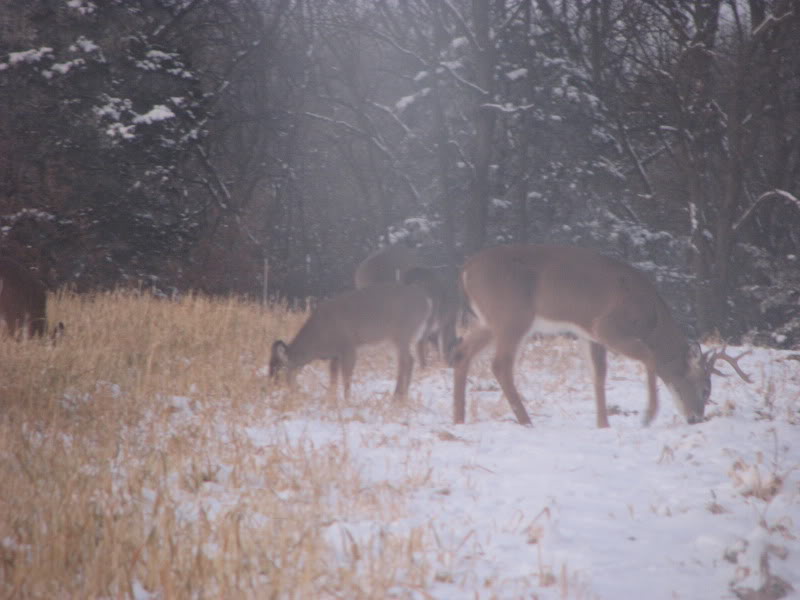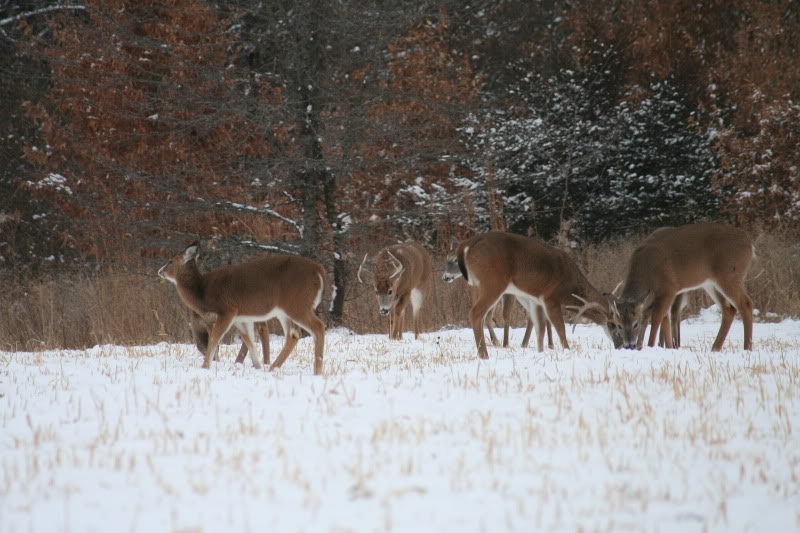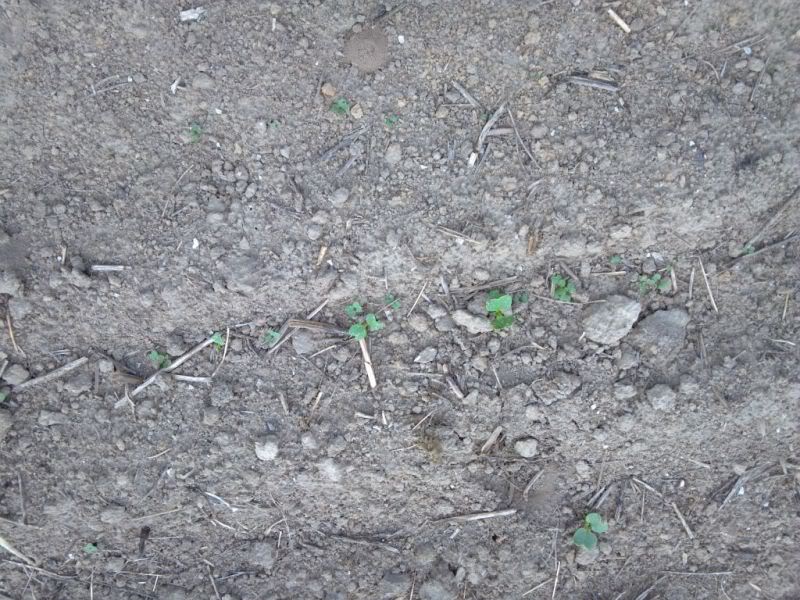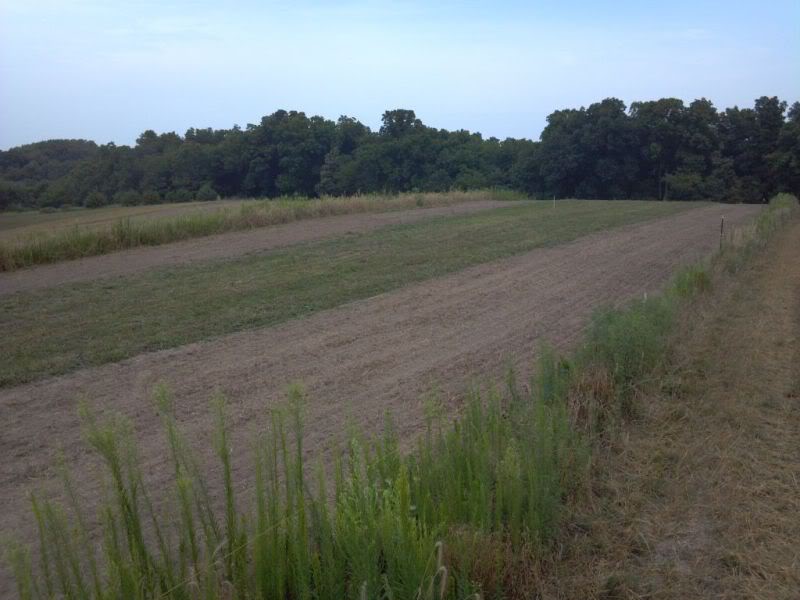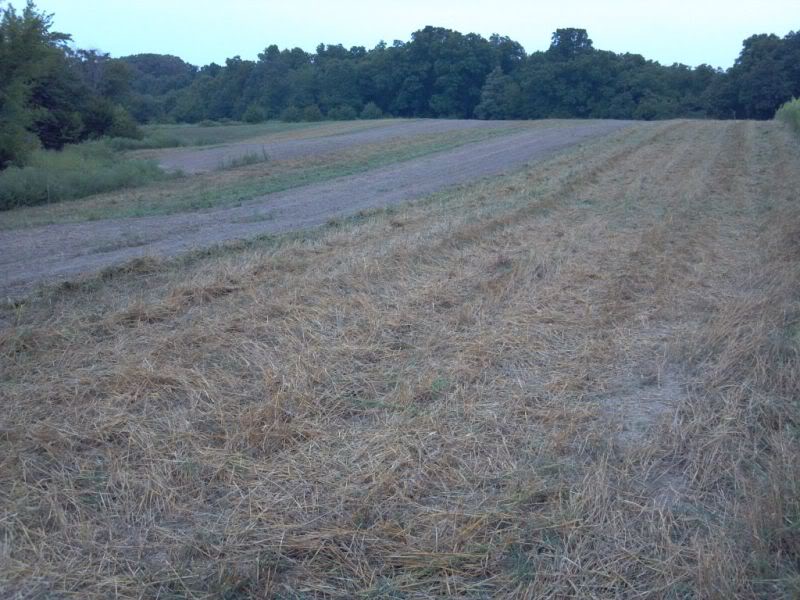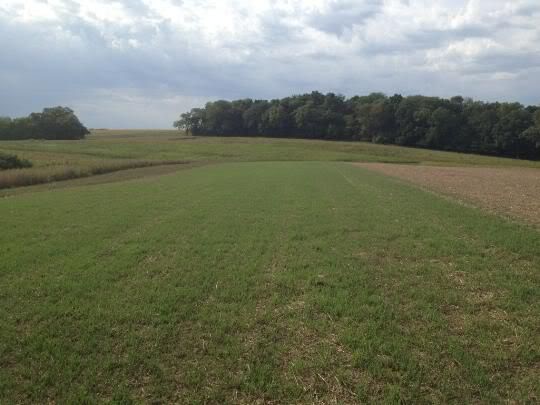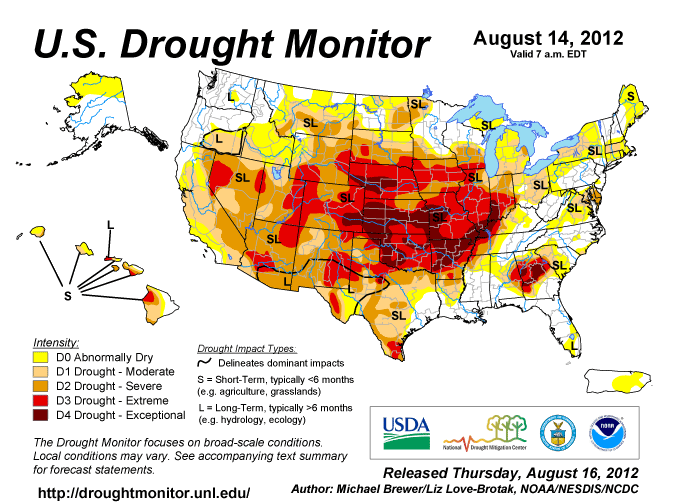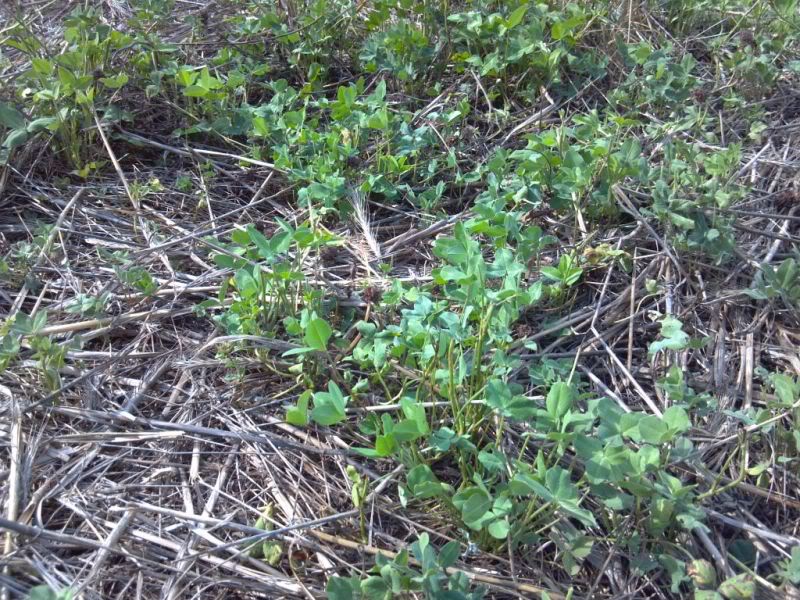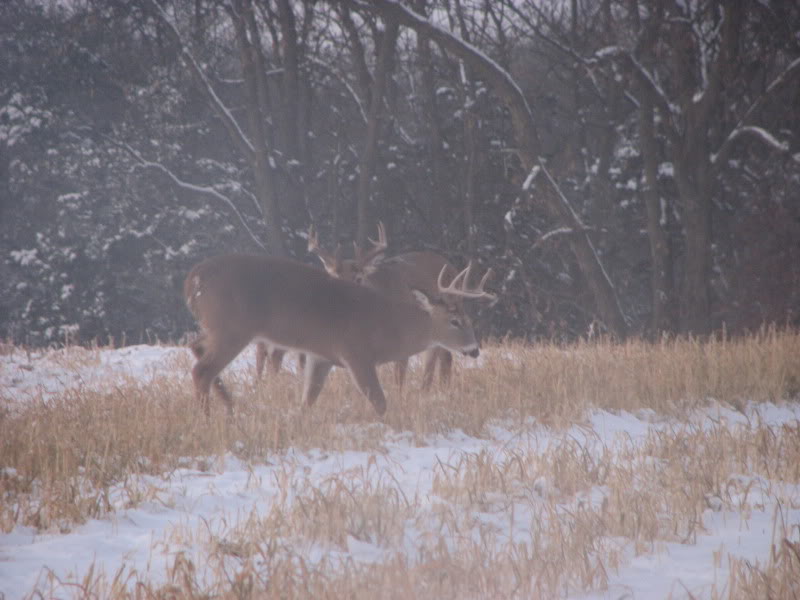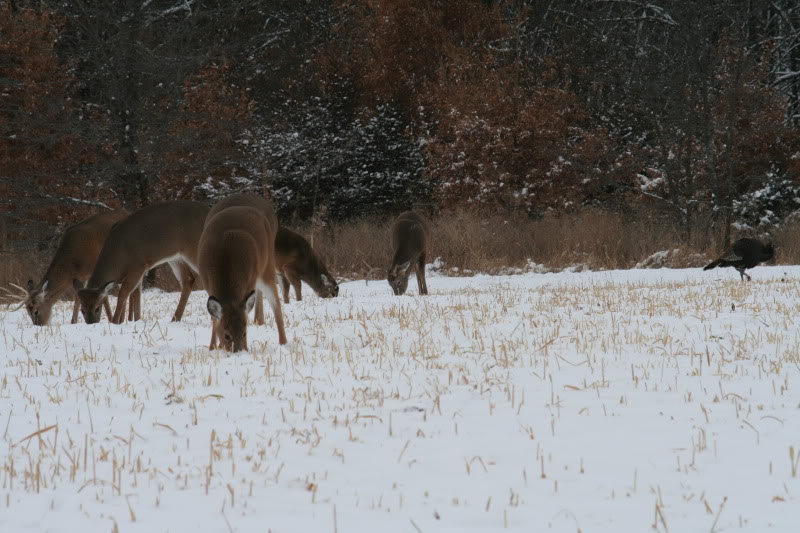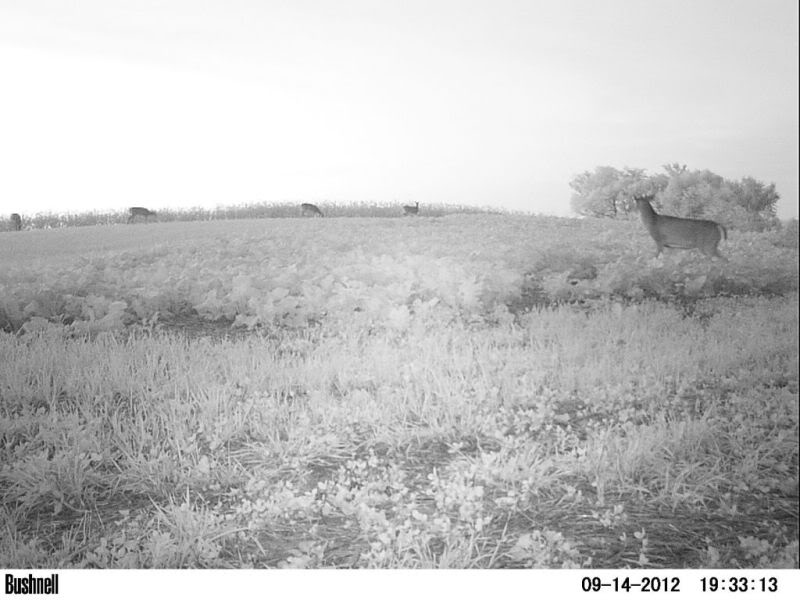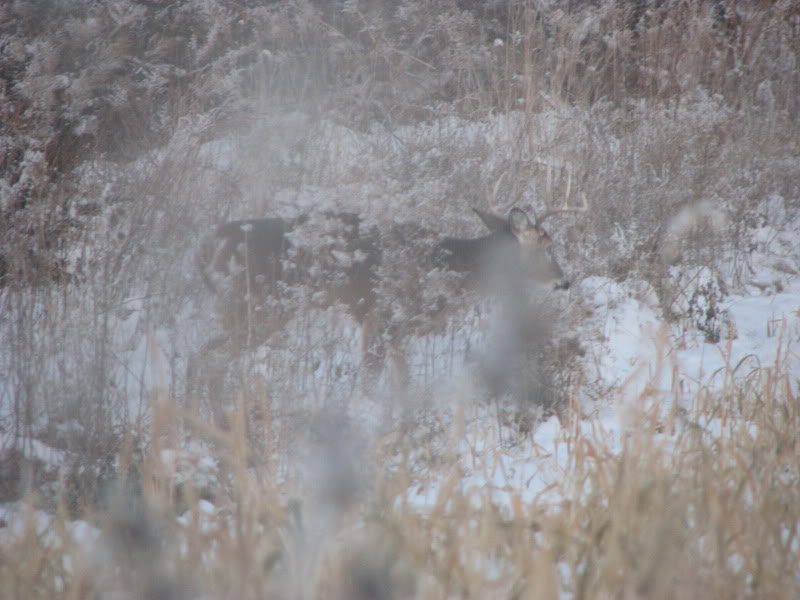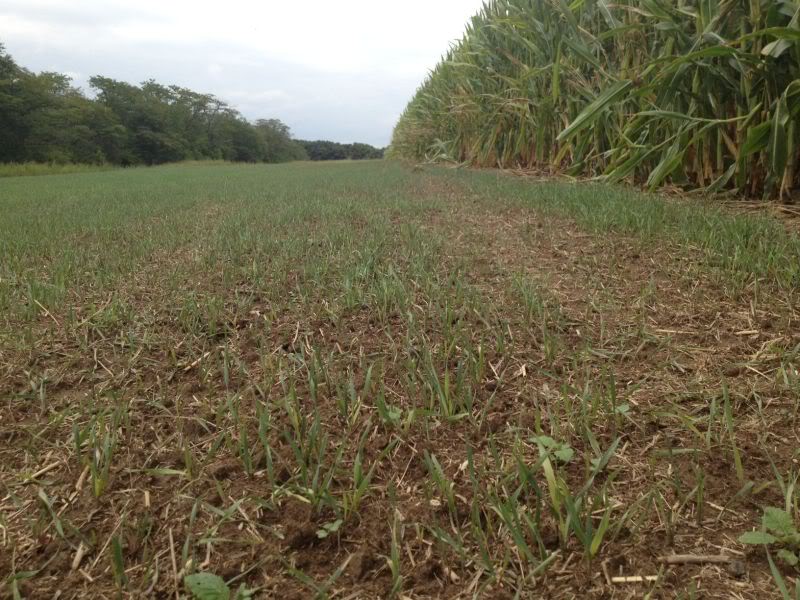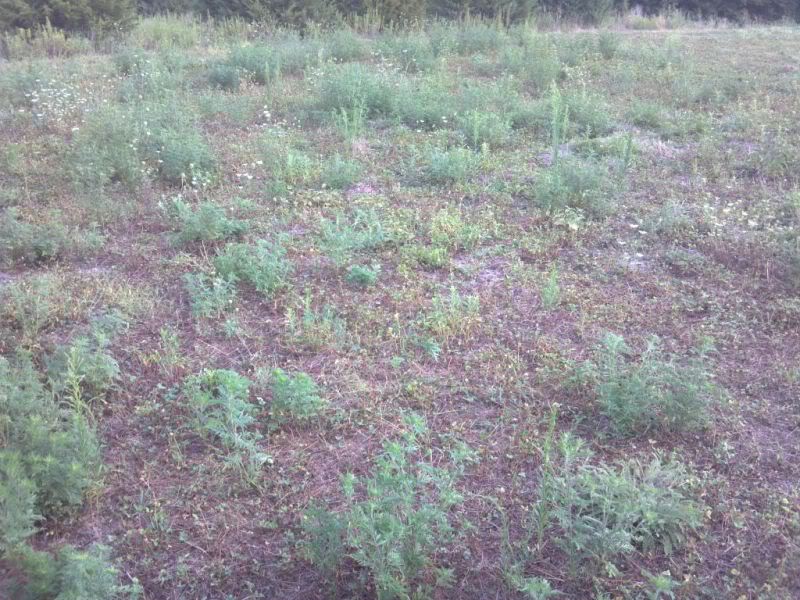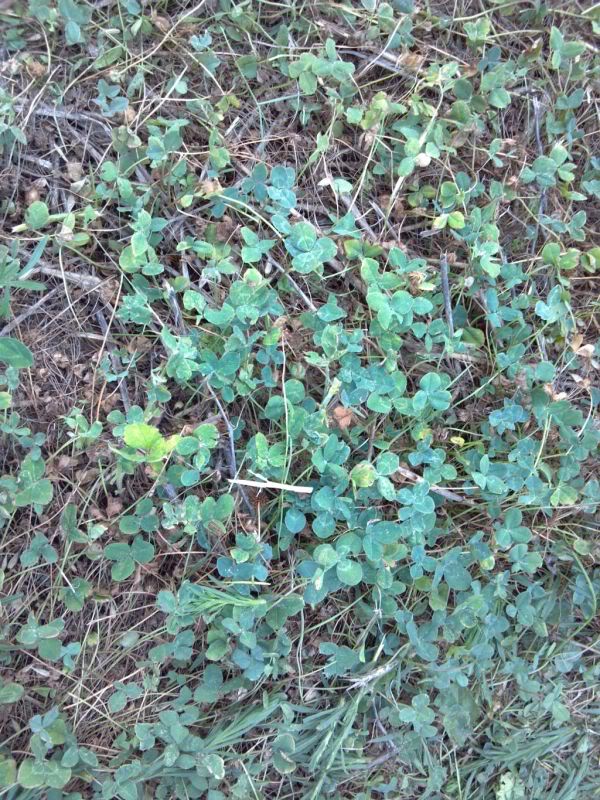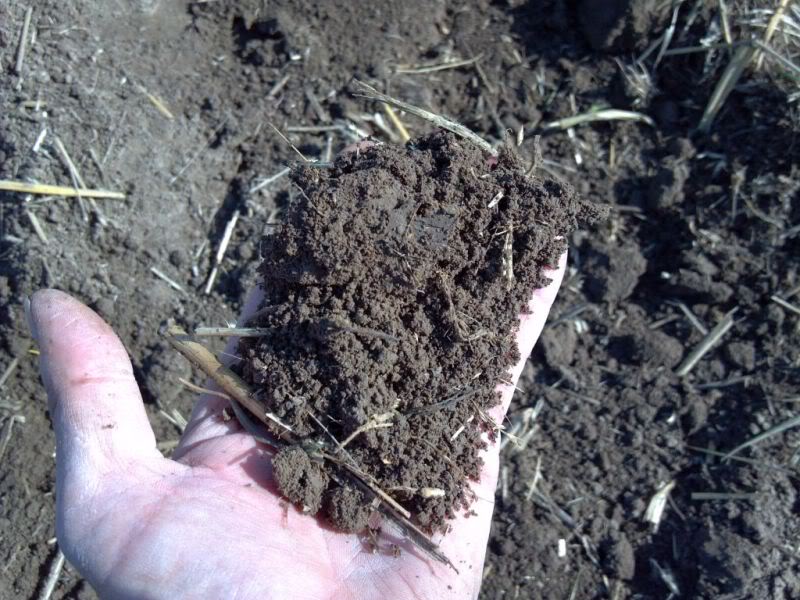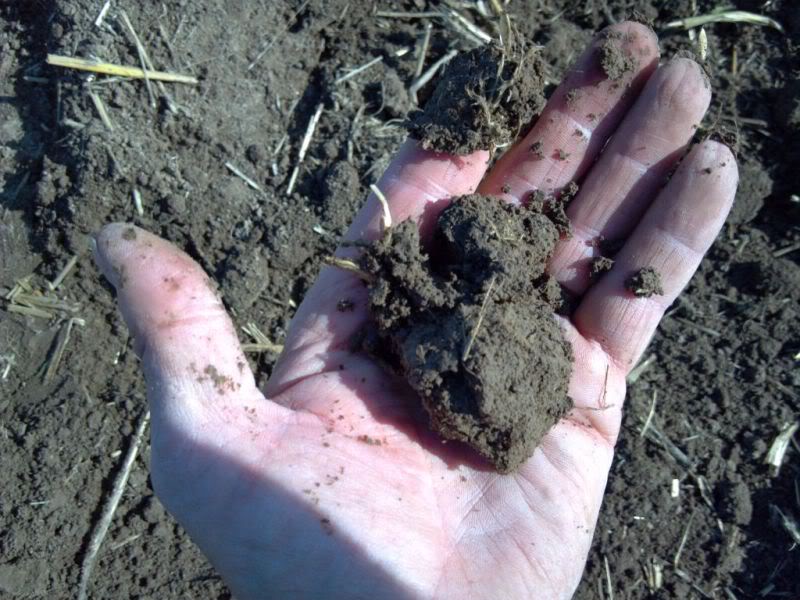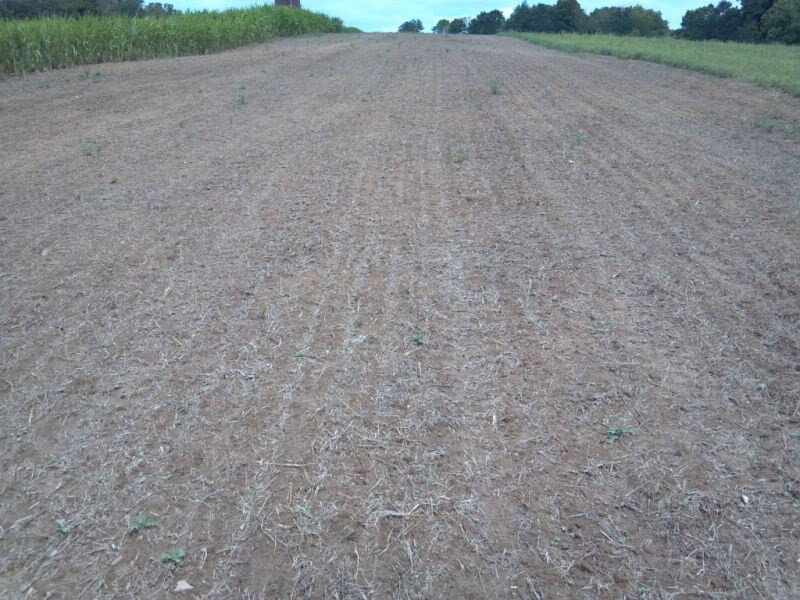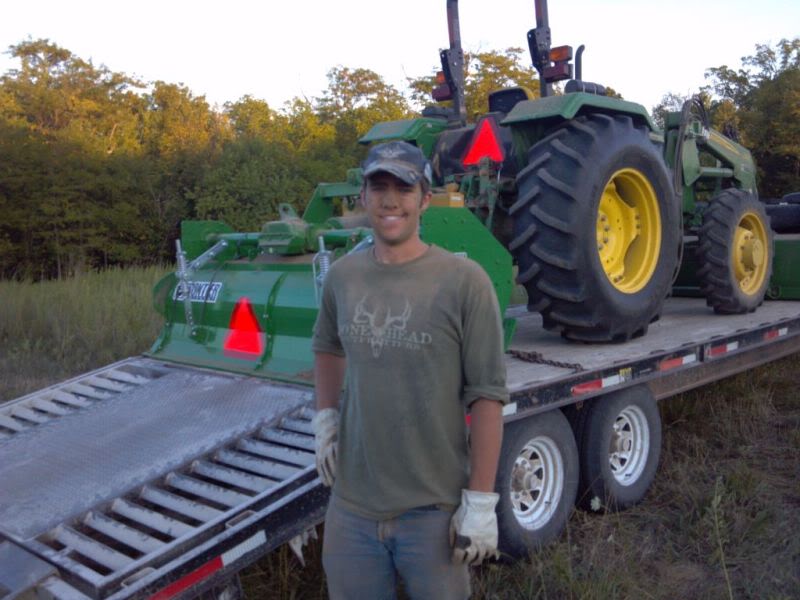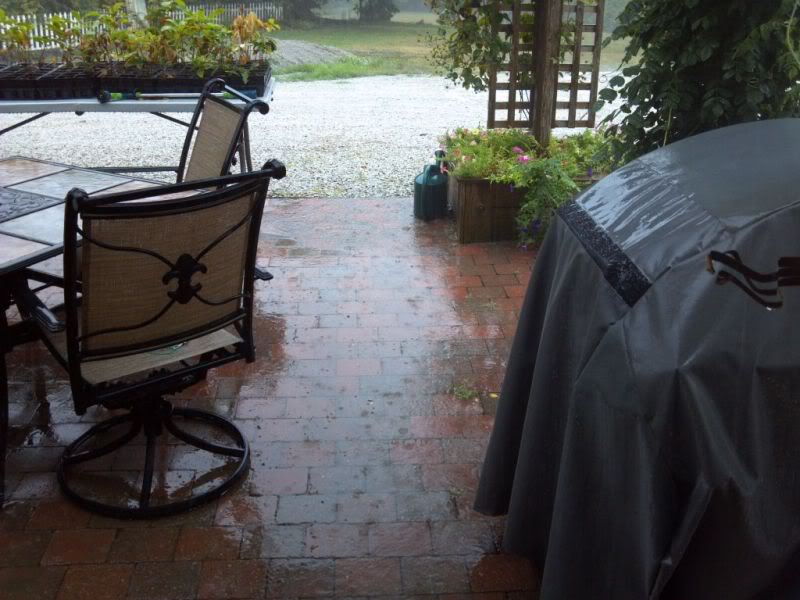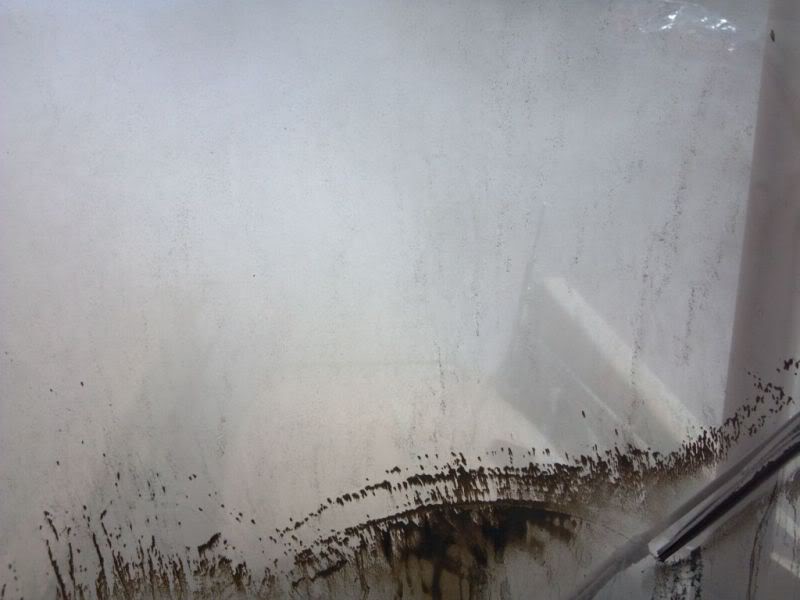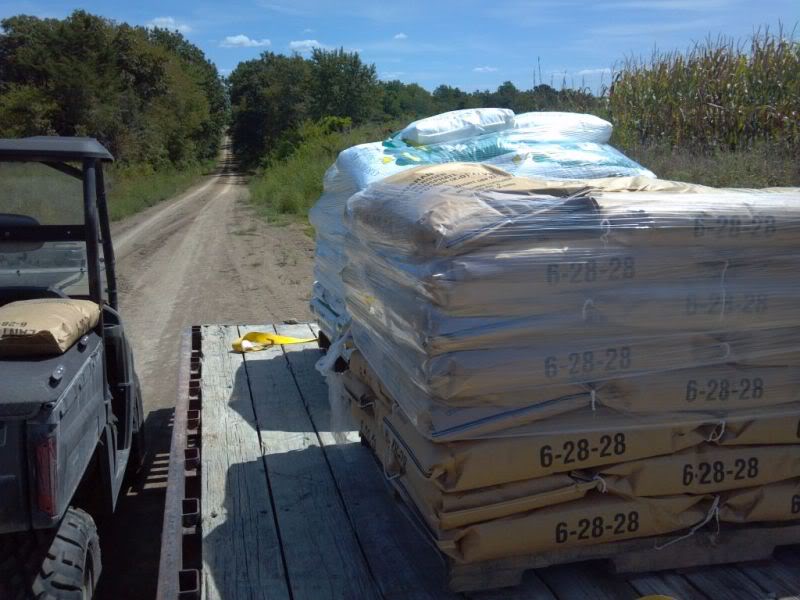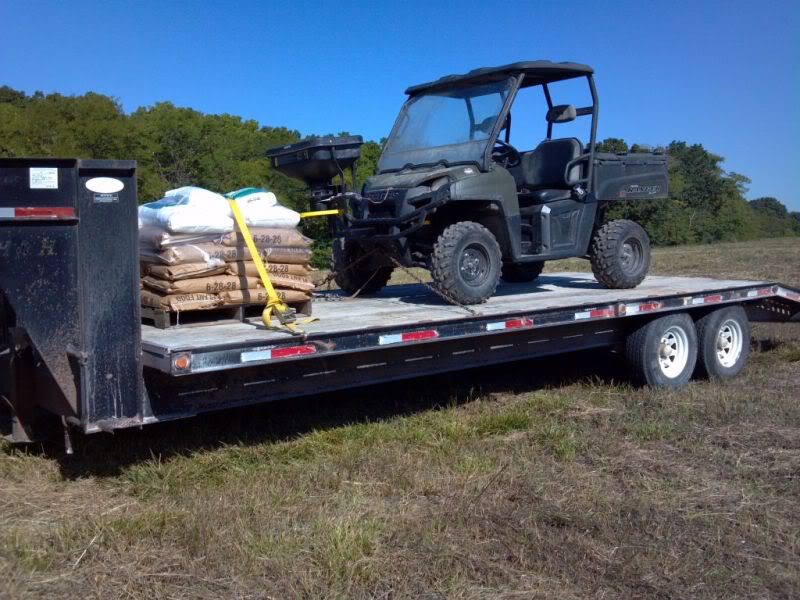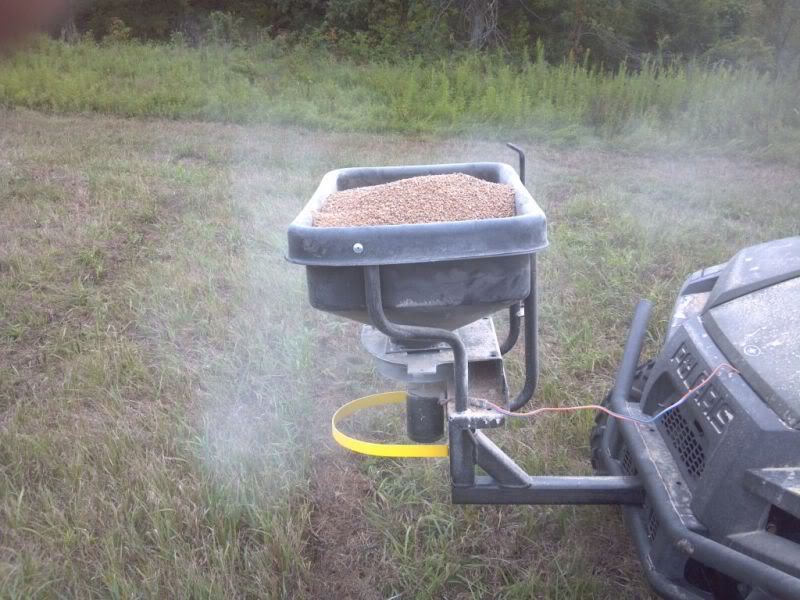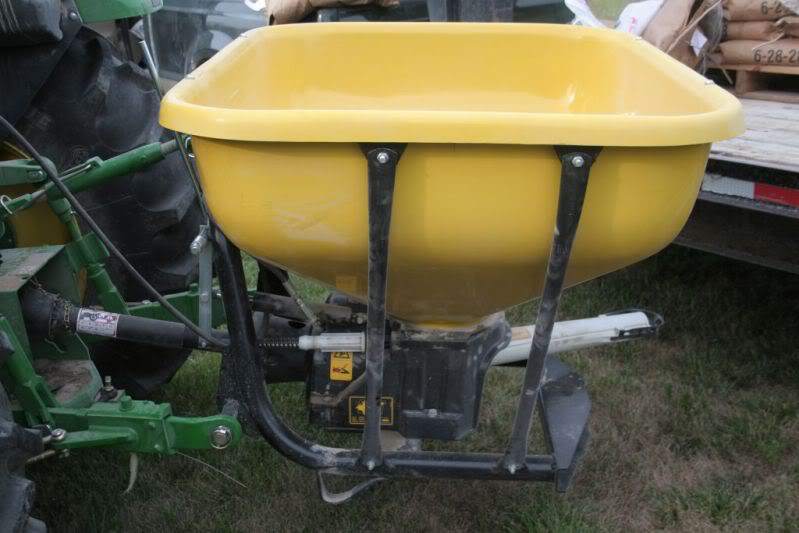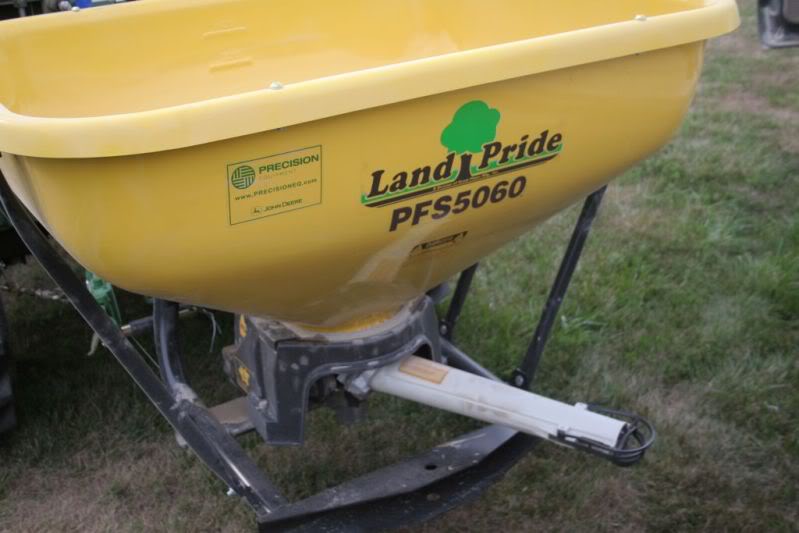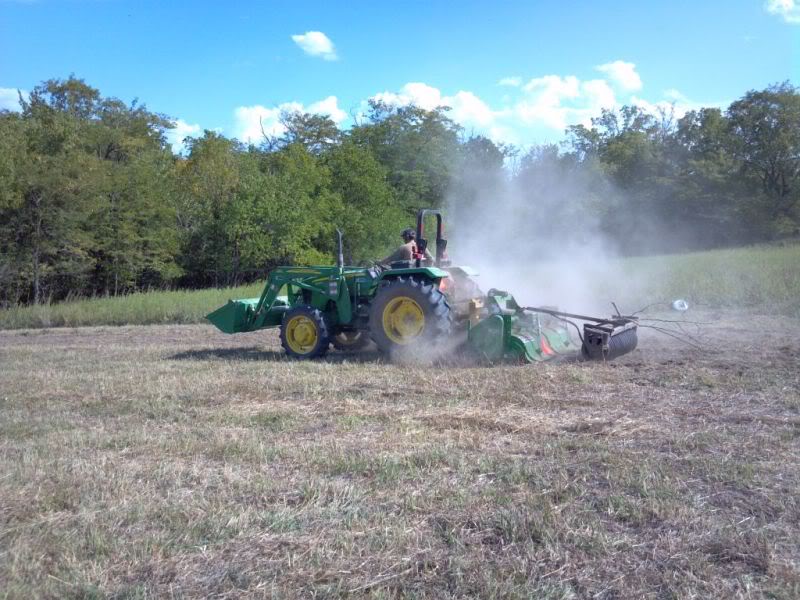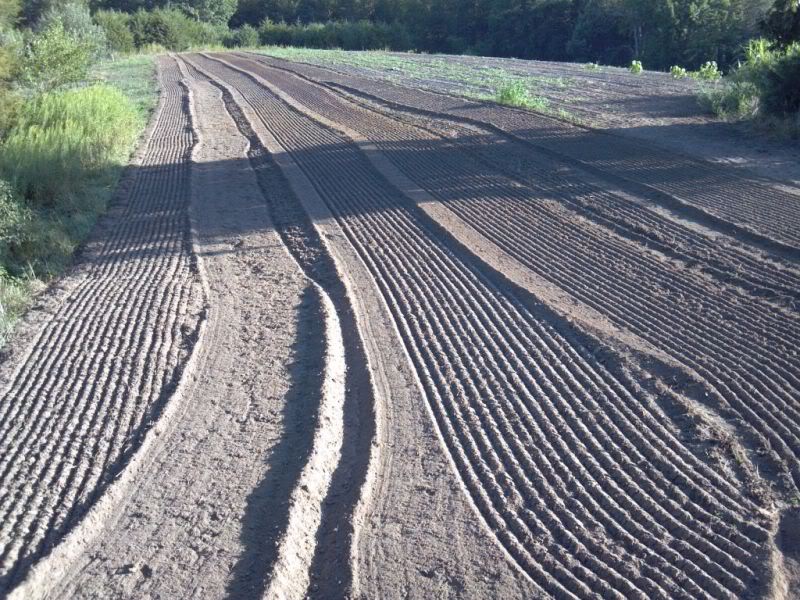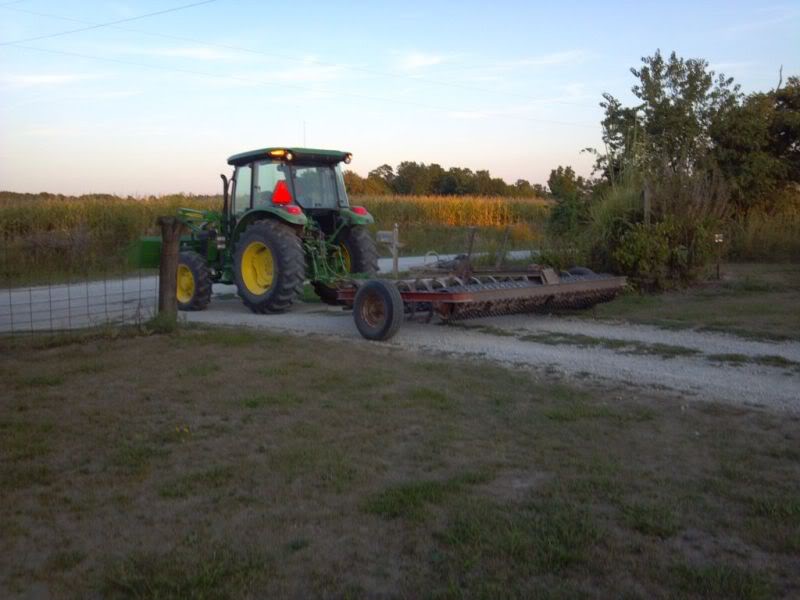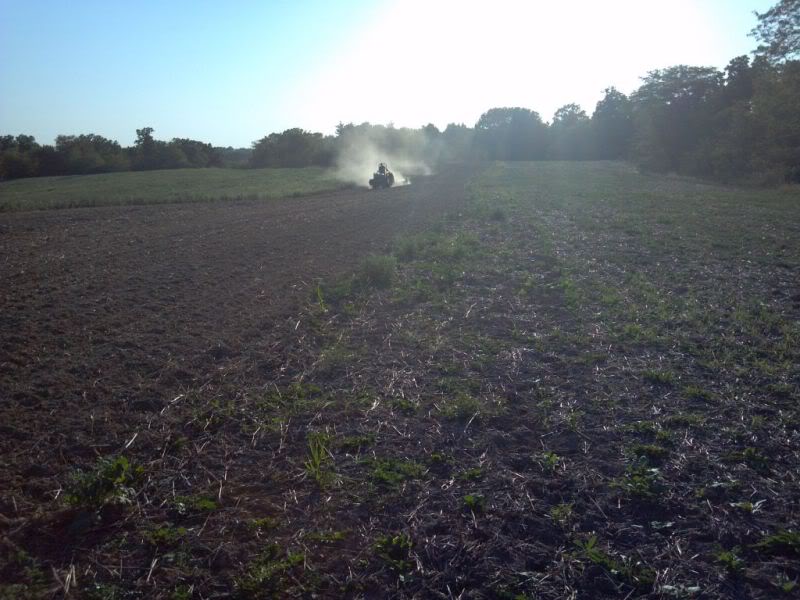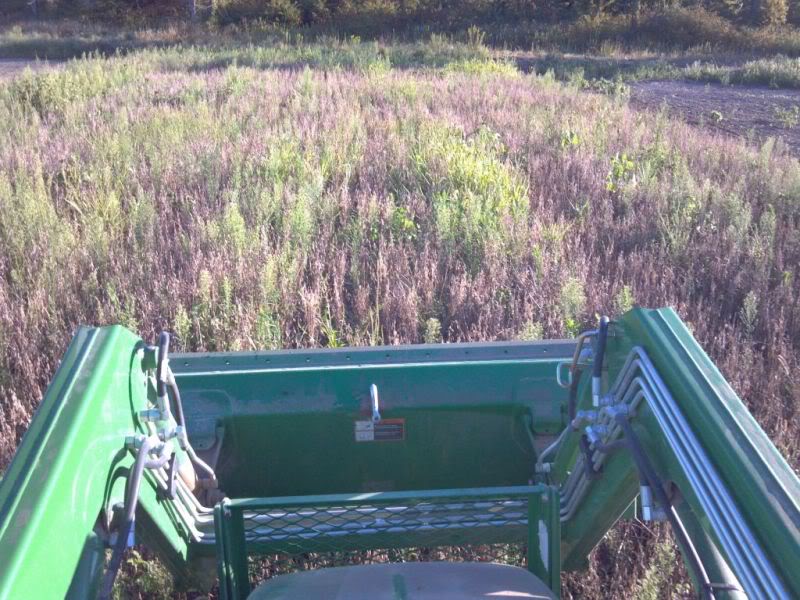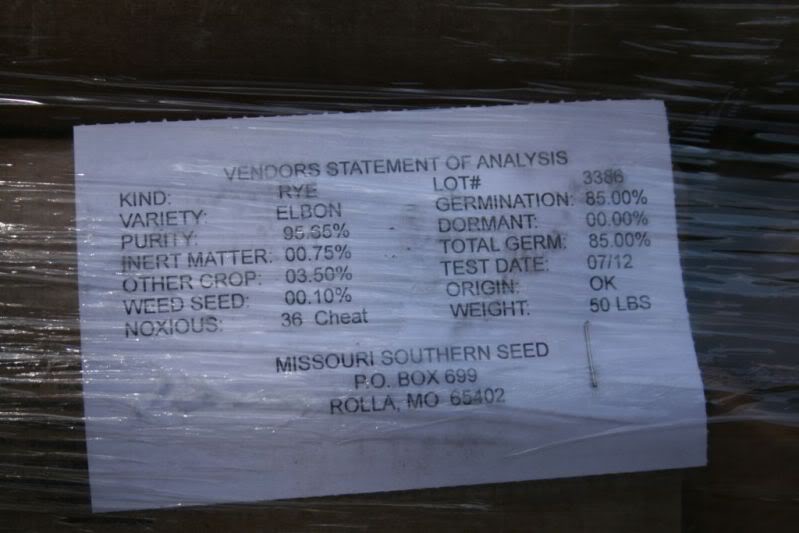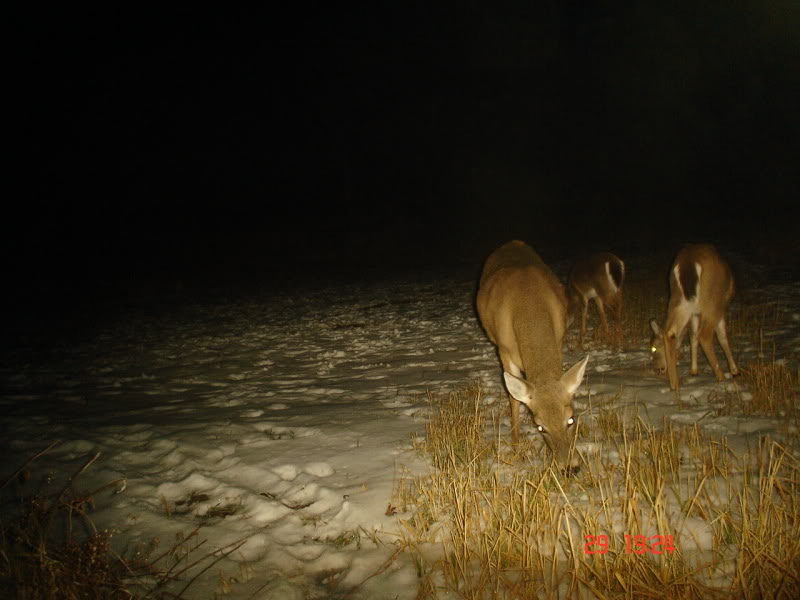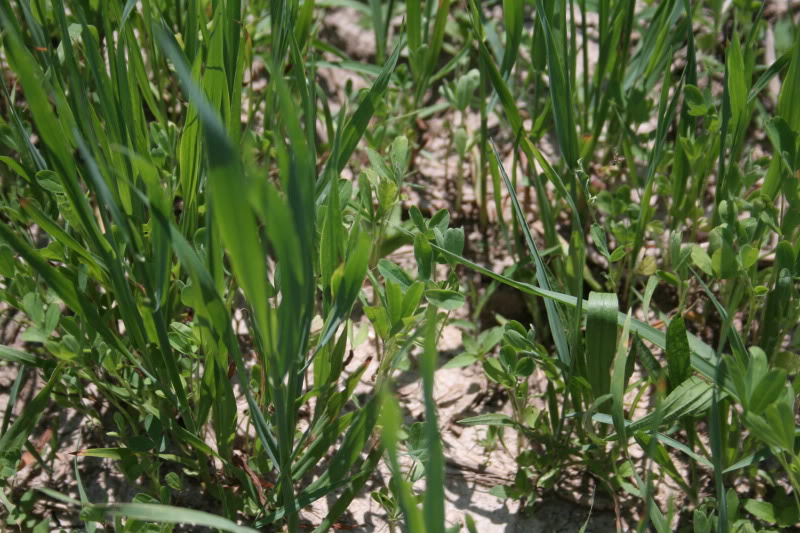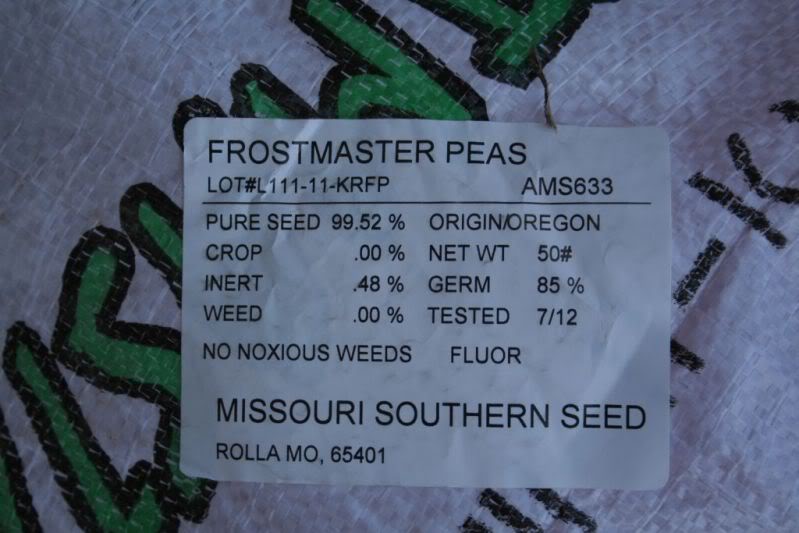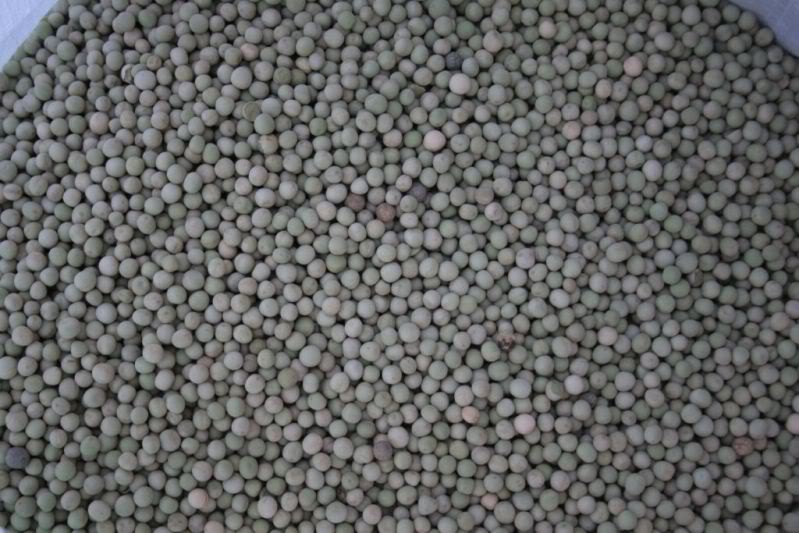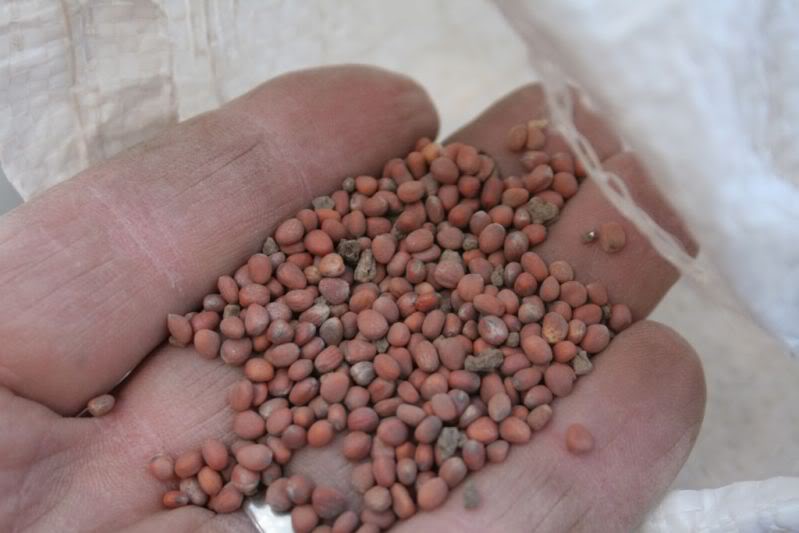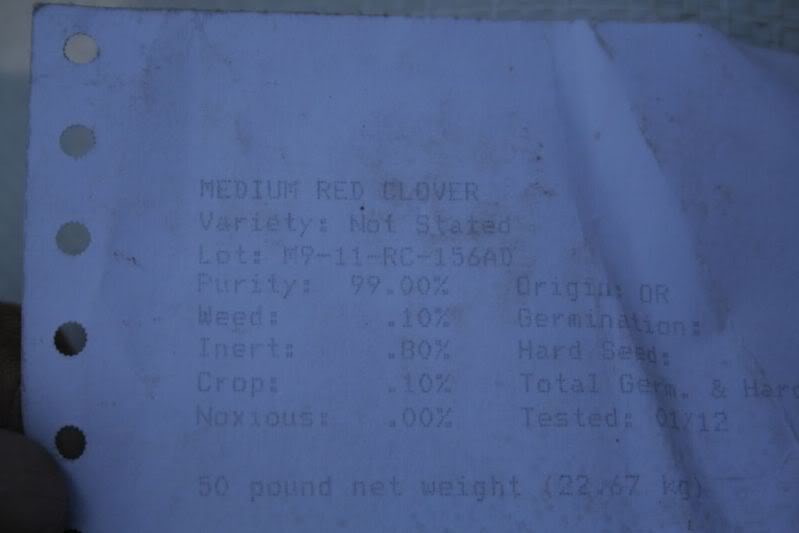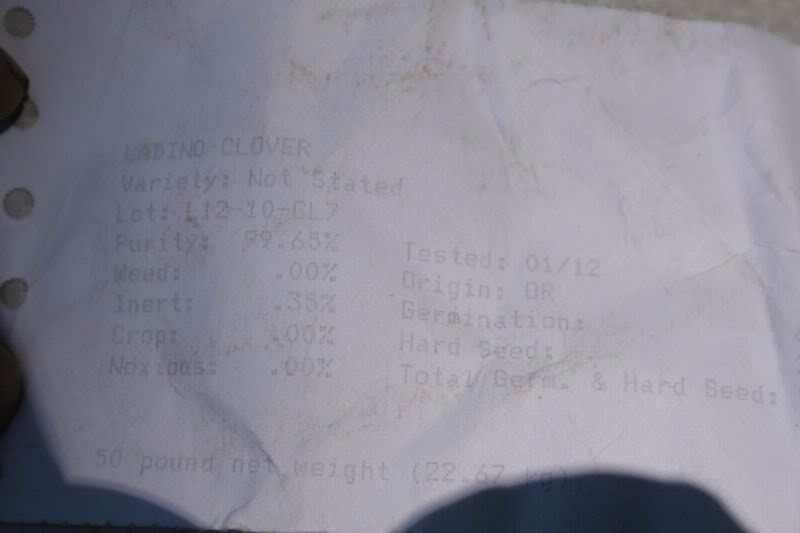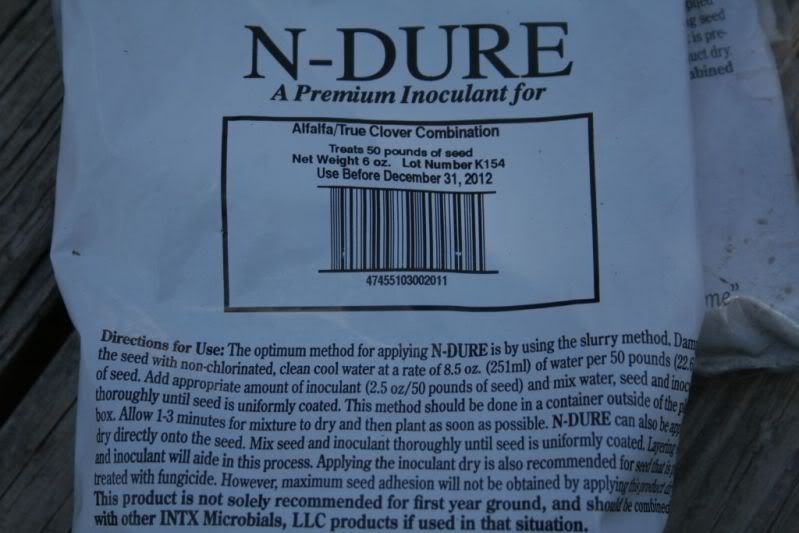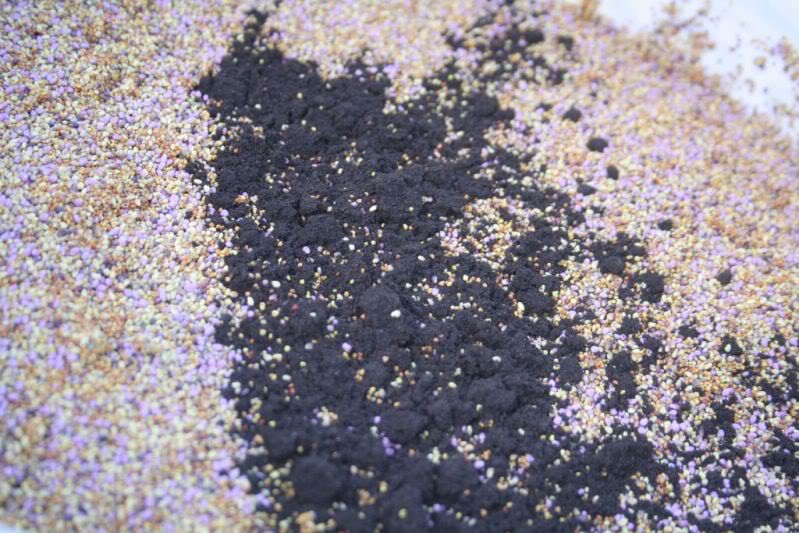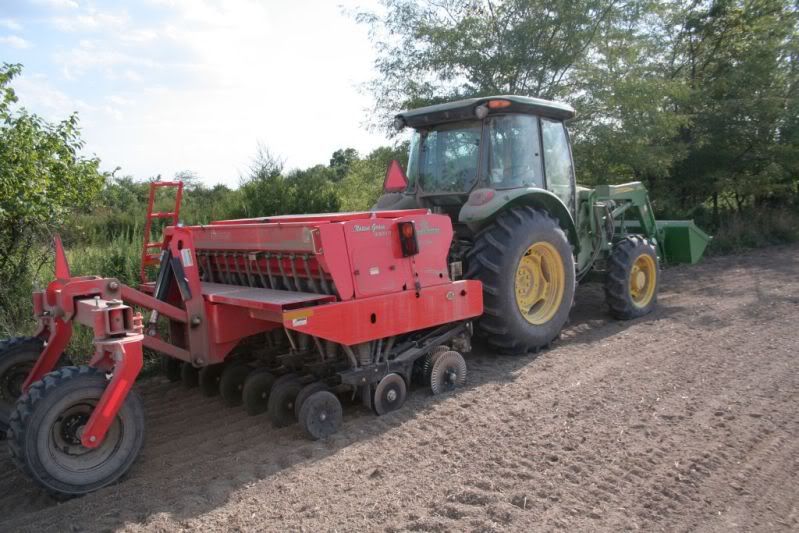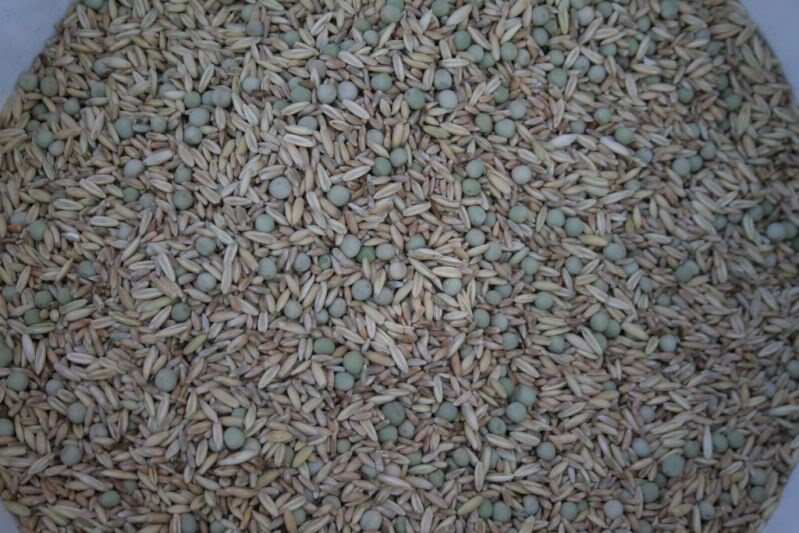dbltree
Super Moderator
August 3rd, 2012
In our endeavor to provide year around food sources for our whitetails and...keep our soils productive, oats and annual clovers play an important role by filling in the period in the spring and summer following brassicas the year before. the combination provides more food sources as well as organic matter and nitrogen when tilled under for rye in the fall.
As the oats mature...deer continue to feed on the tender berseem and crimson clovers growing beneath
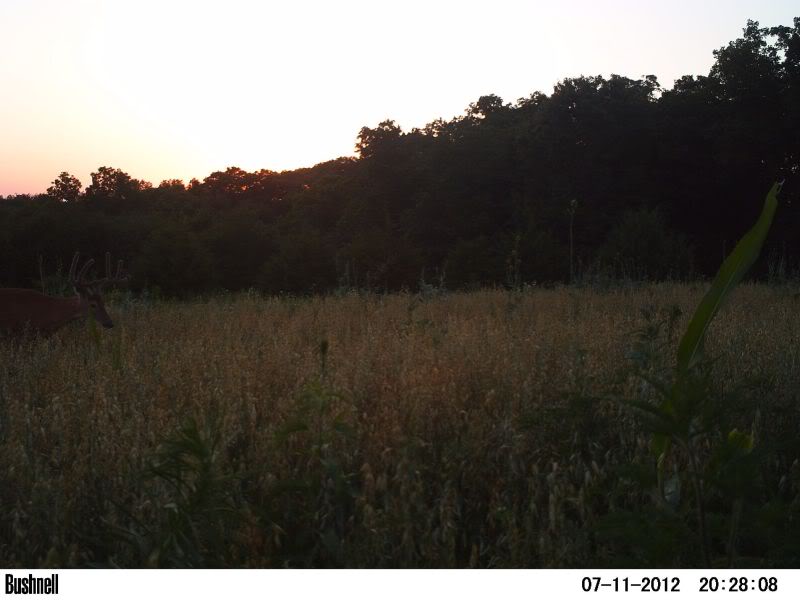
Corn and soybeans are just across the fence but these deer are content feeding in the feeding areas that have provided food for them...year around, year after year
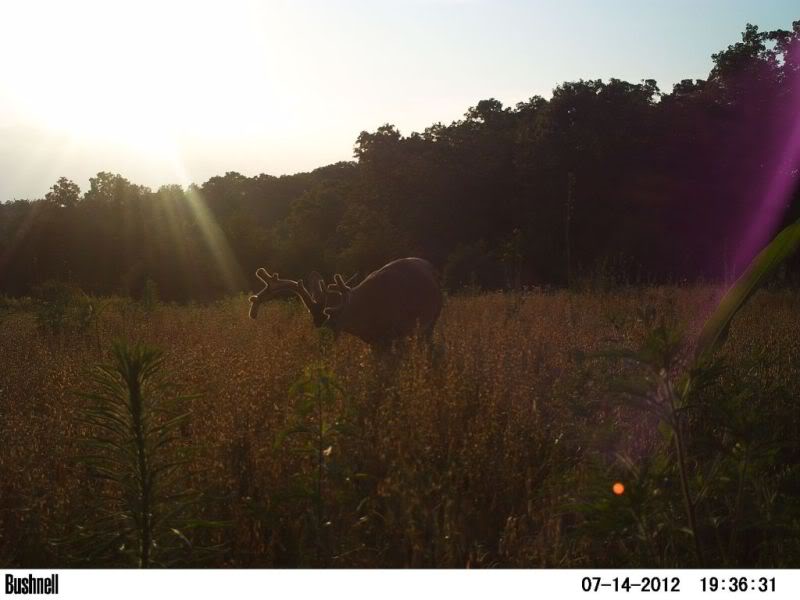
The rye and red clover strips have been tilled under to plant brassicas

but the oats and annual clovers keep deer coming and help us avoid having the entire field turned into a..."dirt plot"...
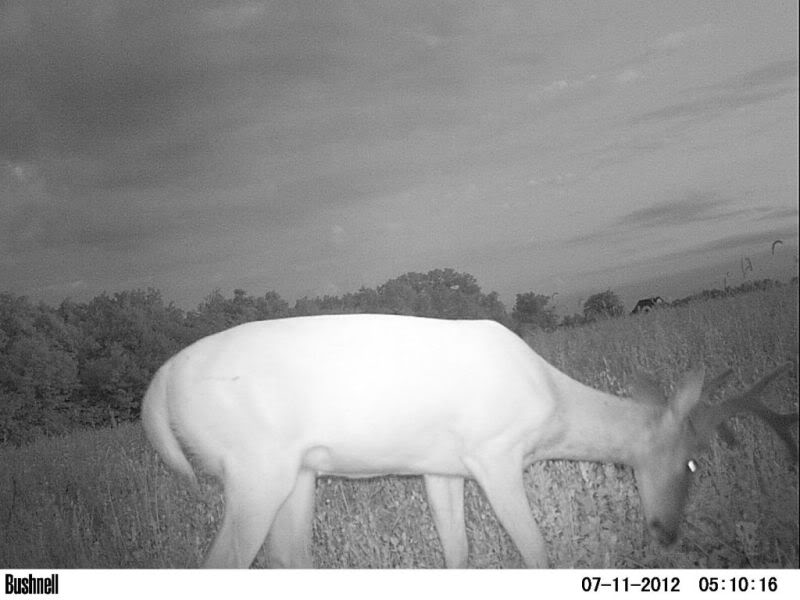
The oats have now matured and the annual clovers flowered (at which point they stop fixing nitrogen) so it's time to mow/shred the oats and straw, any weeds present (before they go to seed) and get the annuals growing and working for us again.
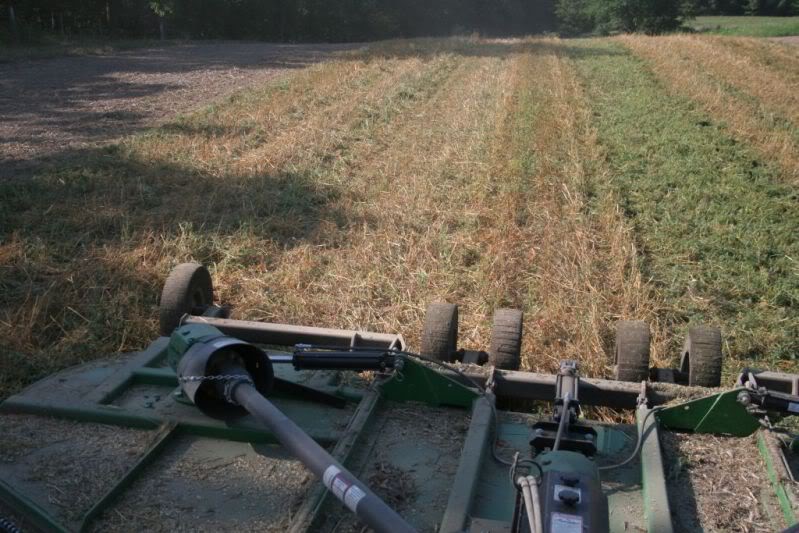
Where soils are better and higher in organic matter, thus holding more moisture the oats and clovers did well and kept weeds suffocated
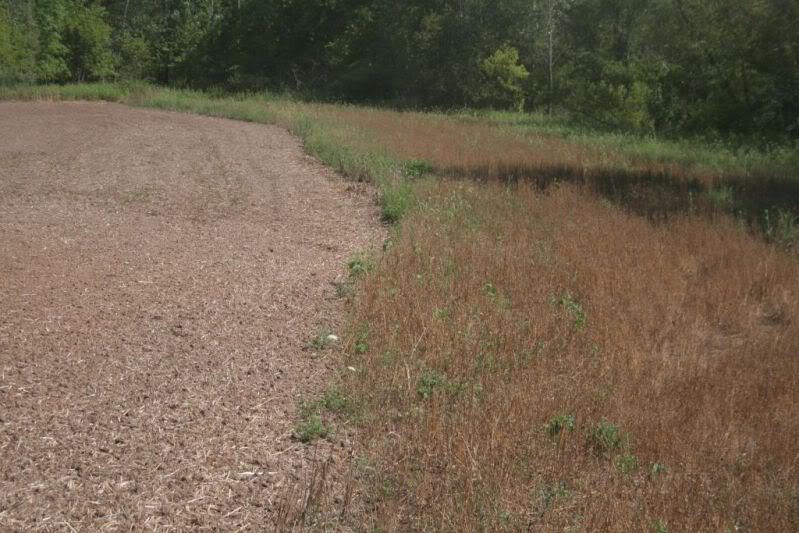
But on poorer, less productive soils (where we still have a lot of work to do) the clovers eventually succumbed to the hot searing sun and lack of water and the ever resilient weeds take their place...

Now almost any "weed" can actually make good green manure and pigweeds will often be grazed heavily so as long as we get them clipped before they go to seed they are not necessarily a bad thing
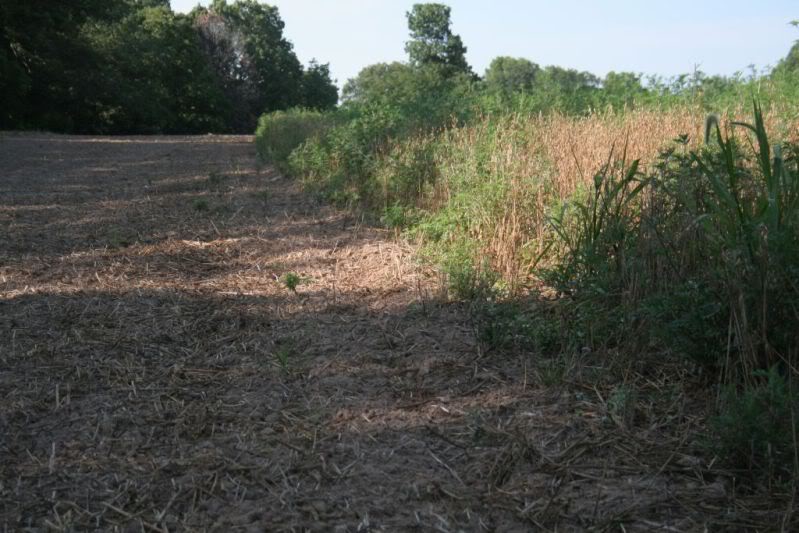
Billions of weed seeds however, we do not need so be sure to watch growth and get the field mowed before seedhead are formed.
Our strip plots this time of year then, look like this....perennial white clovers on the left, oat/clover mix (going to rye/red clover) in the center and brassica planting on the right
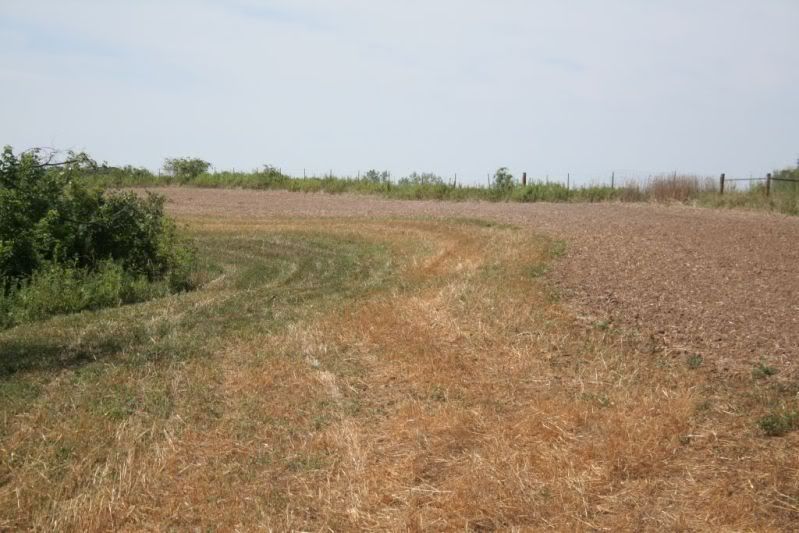
Thanks to the water retaining rye root systems and straw...baby brassicas are popping up
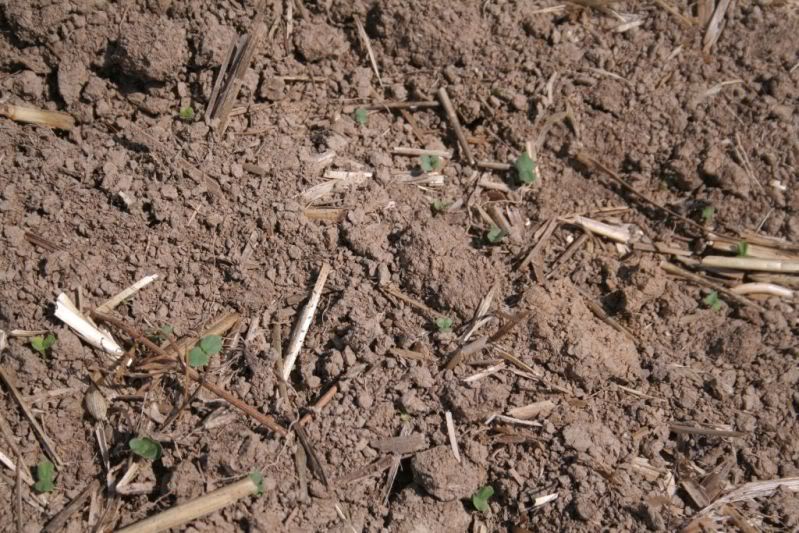
White and red clovers are keeping whitetails coming in to the plot
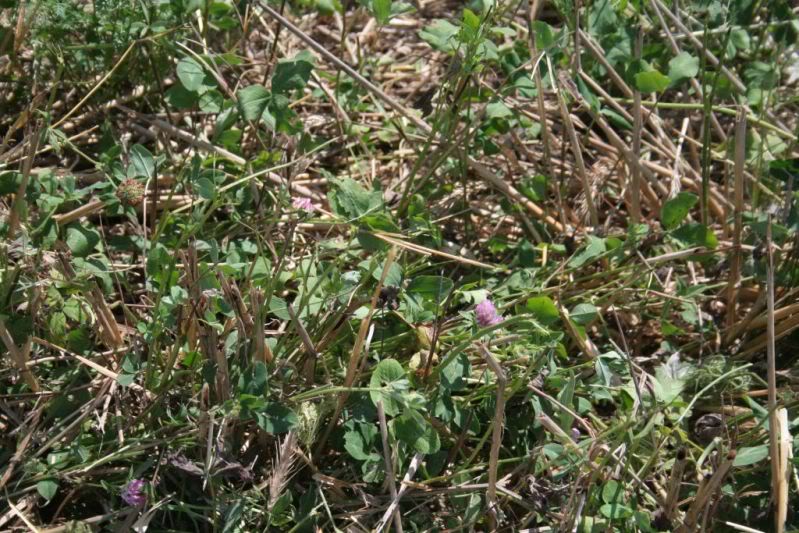
and the entire field is not...a dirt plot
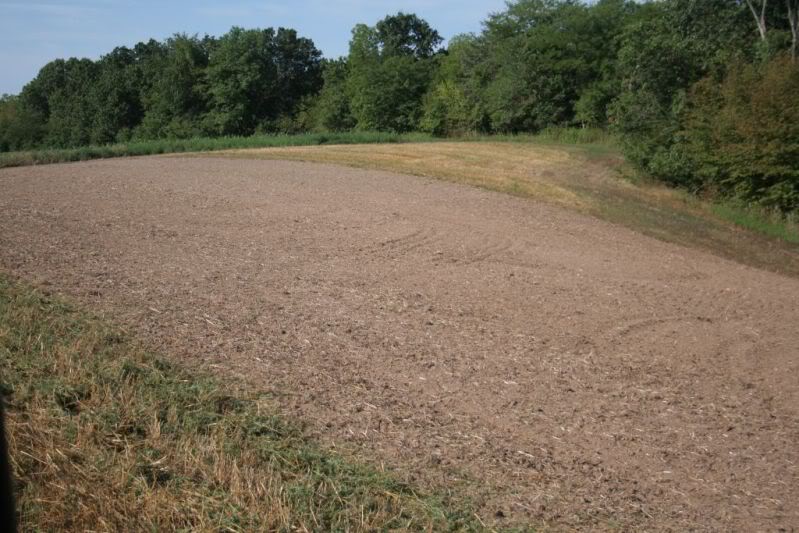
the plate is never empty in our feeding areas, in dry years and wet...the combination of crops we plant insures that something will grow and provide whitetails with their daily needs.
Questions asked...
What do I need to do to prepare for the fall cereal mix?
if the field is sod...
If field is already in the rotation and is in oats
If we do not get much rain....the oat seed will germinate when tilled under and becomes in essence "free seed"
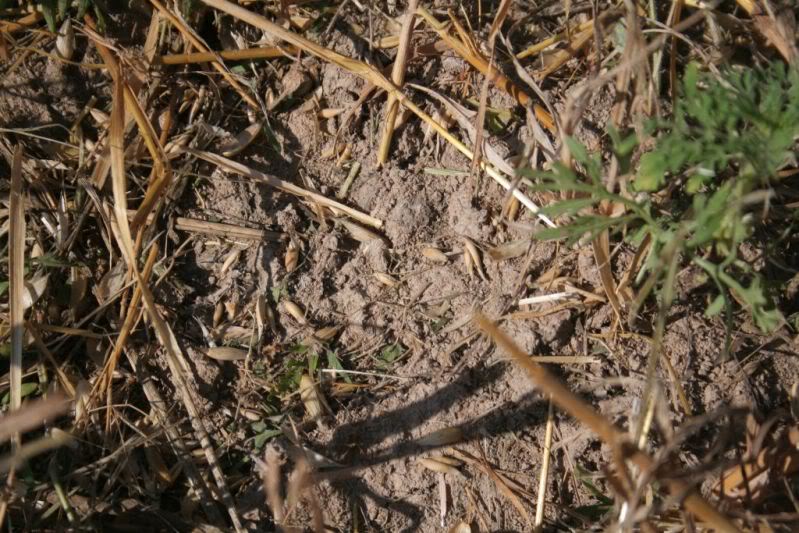
Depending on the area of the country in which you live...plant either before or after September 1st. Before in the north (zones 4 and 5) and after as you move southward into zone 6 and 7 as follows
What kind of oat seed should I buy?
Almost any oats will work but Jerry if my favorite because it does not mature to quickly, stays tender and palatable and is very cold tolerant. One friend said the only oats anyone had were BFO..."what should I do?"...I told him to skip the oats and just plant 75#'s of rye. I have tested many varieties of oats and BFO was the only one they wouldn't touch if they had any other possible alternative.
Other then that, even bin run oats (feed grade oats)will work in a bind however they may have some weed seeds in them. For most...planting time is still weeks away, plenty of time to soil test if you are just beginning and regardless of where you live...please pray for rain in the drought stricken areas....
In our endeavor to provide year around food sources for our whitetails and...keep our soils productive, oats and annual clovers play an important role by filling in the period in the spring and summer following brassicas the year before. the combination provides more food sources as well as organic matter and nitrogen when tilled under for rye in the fall.
As the oats mature...deer continue to feed on the tender berseem and crimson clovers growing beneath

Corn and soybeans are just across the fence but these deer are content feeding in the feeding areas that have provided food for them...year around, year after year

The rye and red clover strips have been tilled under to plant brassicas

but the oats and annual clovers keep deer coming and help us avoid having the entire field turned into a..."dirt plot"...

The oats have now matured and the annual clovers flowered (at which point they stop fixing nitrogen) so it's time to mow/shred the oats and straw, any weeds present (before they go to seed) and get the annuals growing and working for us again.

Where soils are better and higher in organic matter, thus holding more moisture the oats and clovers did well and kept weeds suffocated

But on poorer, less productive soils (where we still have a lot of work to do) the clovers eventually succumbed to the hot searing sun and lack of water and the ever resilient weeds take their place...

Now almost any "weed" can actually make good green manure and pigweeds will often be grazed heavily so as long as we get them clipped before they go to seed they are not necessarily a bad thing

Billions of weed seeds however, we do not need so be sure to watch growth and get the field mowed before seedhead are formed.
Our strip plots this time of year then, look like this....perennial white clovers on the left, oat/clover mix (going to rye/red clover) in the center and brassica planting on the right

Thanks to the water retaining rye root systems and straw...baby brassicas are popping up

White and red clovers are keeping whitetails coming in to the plot

and the entire field is not...a dirt plot

the plate is never empty in our feeding areas, in dry years and wet...the combination of crops we plant insures that something will grow and provide whitetails with their daily needs.
Questions asked...
What do I need to do to prepare for the fall cereal mix?
if the field is sod...
1) Mow field (early August)
2) allow sodgrass to green up
3)Spray with glyphosate (1-2 quarts per acre Roundup)
If field is already in the rotation and is in oats
1) Mow/shred oat straw anytime in August...earlier if weedy and/or annual clovers are flowering
If we do not get much rain....the oat seed will germinate when tilled under and becomes in essence "free seed"

Depending on the area of the country in which you live...plant either before or after September 1st. Before in the north (zones 4 and 5) and after as you move southward into zone 6 and 7 as follows
1) Till in fertilizers and lime (if the plot was in brassicas and previously had P&K and line applied this will be urea only)
2) broadcast or drill in large seeds, rye, oats and peas
3) Cultipack to cover
4) Broadcast clover and radish seeds
5) Cultipack to cover
What kind of oat seed should I buy?
Almost any oats will work but Jerry if my favorite because it does not mature to quickly, stays tender and palatable and is very cold tolerant. One friend said the only oats anyone had were BFO..."what should I do?"...I told him to skip the oats and just plant 75#'s of rye. I have tested many varieties of oats and BFO was the only one they wouldn't touch if they had any other possible alternative.
Other then that, even bin run oats (feed grade oats)will work in a bind however they may have some weed seeds in them. For most...planting time is still weeks away, plenty of time to soil test if you are just beginning and regardless of where you live...please pray for rain in the drought stricken areas....
Plant ALL in one plot in strips or blocks
Alice, Kopu II, Durana (or comparable) white clover 10% of plot, sow at 6#'s per acre with the rye combination in the fall or in the spring with oats and berseem clover. Correct Ph and P&K with soil tests
Brassicas in 45% of plot
Purple Top Turnips 3#
Dwarf Essex Rape 2#
GroundHog Forage radish 5#
Plant in mid to late July in most Midwest states, or 60-90 days before your first killing frost, Use 200#'s of 46-0-0 urea and 400#'s of 6-28-28 per acre. Follow the dead brassicas with oats and berseem or crimson clover in mid spring at 60#'s oats and 12-15#'s berseem clover and/or 50#'s of chickling vetch)
Cereal Grain combo in 45% of plot
Winter rye 50-80#'s per acre (56#'s = a bushel)
Spring oats 80-120#'s per acre (32#'s = a bushel)
Austrian Winter Peas or 4010/6040 Forage peas 20-80#'s per acre
Red Clover 8-12#'s per acre or white clover at 6#'s per acre (or 20-40 pounds hairy vetch and 20-30#'s crimson clover on sandy soils)
Groundhog Forage Radish 5#'s per acre
Plant in late August to early September, if following well fertilized brassicas use 100 - 200#'s of urea, if starting a new plot add 400#'s of 6-28-28
Rotate the brassicas and rye combo each year



